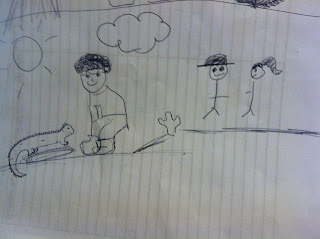I don’t even know where to start.
From a public health viewpoint, this argument might not
hold as much water as the Wakefield research that suggested a link between
children’s vaccinations, but it is still a concern. Because of the society in which we live, LGBT
individuals face discrimination, violence, and misunderstanding, and the lack
of knowledge surrounding the environmental and hereditary components of an LGBT
identity, parents who are led to believe that the mercury in vaccines causes
homosexuality may be reluctant to vaccinate their children. In a country that is heavily religious, and
in that sense, may be more morally and politically opposed to LGBT rights, this
argument may hold more sway than in a country where there is an active push for
LGBT rights and ethical treatment, such as the United States.
Let’s look at the issue of mercury poisoning. According to faculty at the University of
Washington’s Neuroscience Department, mercury exposure in childhood can damage
primarily the visual cortex, the cerebellum, and the dorsal root ganglia. Obviously, the visual cortex deals with
vision, the cerebellum coordinates movement, and the dorsal root ganglia transmit
sensory information to the brain. Granted, a damaged visual cortex would make it difficult to read the signs outside a gay strip club, which might result in an embarrassing blunder, but these brain areas could not otherwise predispose someone to "become gay". Nowhere does it say that mercury poisoning
damages the frontal lobes, the “seat” of personality and decision making. Furthermore, Vanoli fails to detail the areas
the mercury would affect; stating only that the mercury damages the “formation
of personality”. From my perspective, minimizing
something as central to identity as sexual orientation or gender identity to a
personality trait is insensitive as best, and dehumanizing at worst.
Furthermore, describing homosexuality as “microform of
autism” is overwhelmingly offensive and just plain wrong. It’s wrong from an ethical perspective to
compare a neuropsychological condition to an aspect of gender and sexual
identity that has been determined to be not pathological by the APA. This comparison reflects Vanoli’s
insensitivity but also his lack of psychological knowledge. Also, we must consider Vanoli’s inherent
biases, especially when he is described as a “scientist, journalist, and
opponent of vaccines. I did a little digging
on Vanoli, and I found that in Italy, he is considered more of an “infamous”
scientist (at least, that’s what my translation said), who is known for
producing fringe theories. An analog
would be the researchers who deny the causal link between HIV and AIDS.
I think this topic connects nicely to some of my earlier
posts about representing both sides of an issue. Certainly, this is one of those instances
where representing both sides of an issue is not “fair” to the reader. This fringe theory that is driven by
misunderstanding, fear, and a desire to keep a minority population marginalized
and powerless has no valid place in the research about vaccine risks, genetics,
or dangers of environmental toxin exposure in children.



